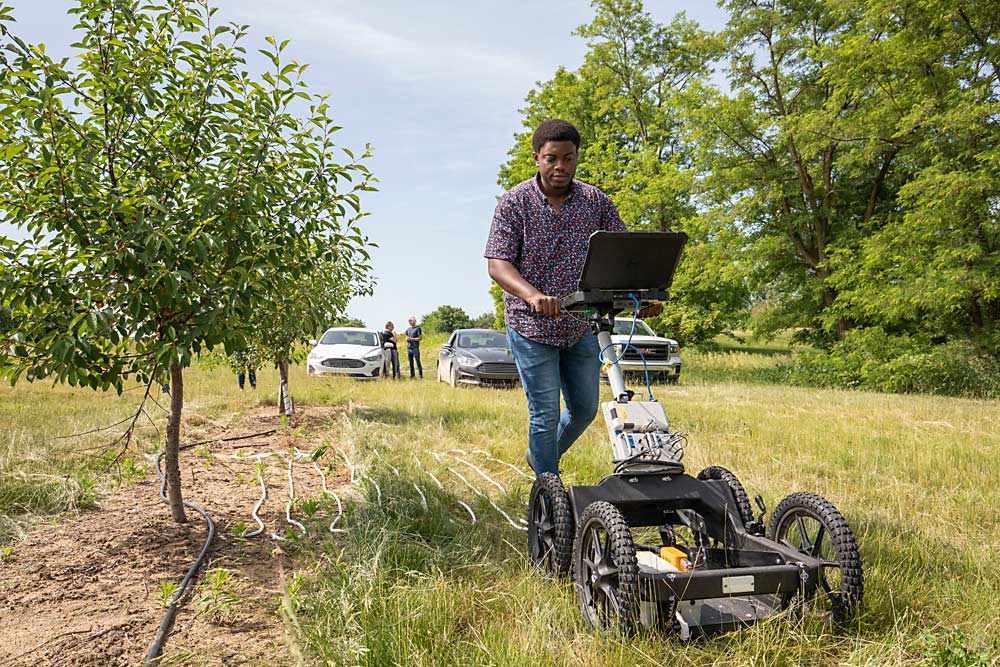
Ground-penetrating radar, drones and other technologies are about to open new doors for the tart cherry industry.
The data these new tools generate will allow researchers to dive much deeper into the cherry tree’s canopy and root systems, learn more about how they interact and discover the ways those interactions affect tree health and yields.
Field work started in June, when Michigan State University crop modeling expert Bruno Basso and tree fruit physiologist Todd Einhorn, along with two of Basso’s graduate students, demonstrated canopy and root-mapping techniques for Good Fruit Grower at MSU’s Clarksville Research Center. Graduate student John Salako mapped out cherry tree roots with a ground-penetrating radar (GPR) machine. Graduate student Blair Van Agen used a drone to map canopies.
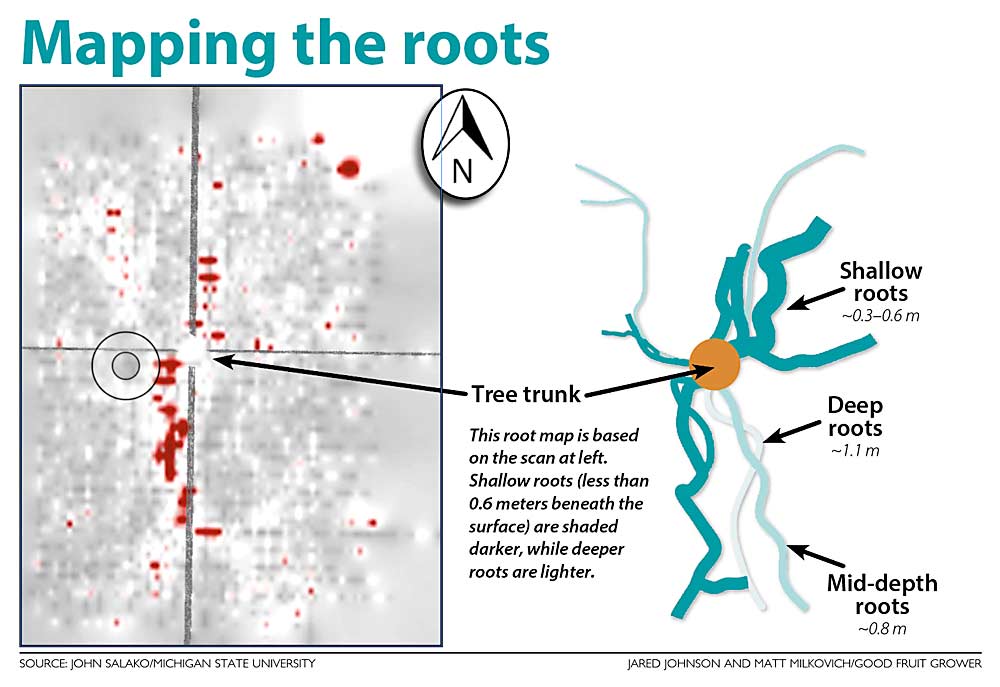
It was Basso and Einhorn’s first time in the field together for this particular project, which is led by Utah State University professor Brent Black. They also plan research trials in Northwest Michigan, where most of the country’s tart cherries are grown, Einhorn said.
By linking together root maps, soil maps, estimated yield maps, canopy imagery and other data, Black and his MSU colleagues hope to optimize the irrigation, nutrition and canopy management of existing tart cherry orchards. The four-year research project is supported by a $2 million grant from the U.S. Department of Agriculture’s Specialty Crop Research Initiative.
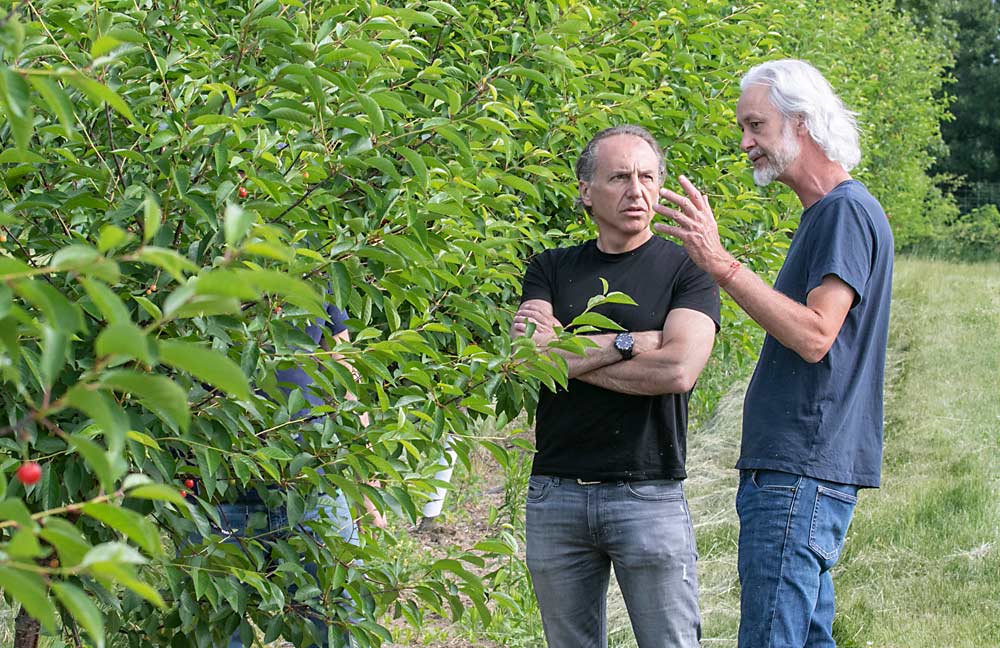
Tart cherry growers need more information about their tree canopies and their tree roots. Both affect a tree’s productivity and, therefore, profitability, but neither is fully understood. Does canopy size affect root depth and distribution, or vice versa? Is root distribution affected by layers in the soil? And how does all of this translate into potential yields? Could different pruning, irrigation or fertilization practices improve struggling trees, or is it time to pull them out? These are some of the questions the researchers want to answer, Einhorn said.
They also want to better understand the differences between growing tart cherries in Michigan and growing them in Utah, two “radically different climates” that happen to be the top two production states in the country, Einhorn said.
To map tree roots at Clarksville, Salako was using a MALA ProEx ground-penetrating radar system with an 800 MHz antenna, which can probe to a maximum depth of about 2.5 meters. GPR emits an electromagnetic pulse into the ground and records the echoes that bounce back from subsurface objects, in this case the roots of a cherry tree.
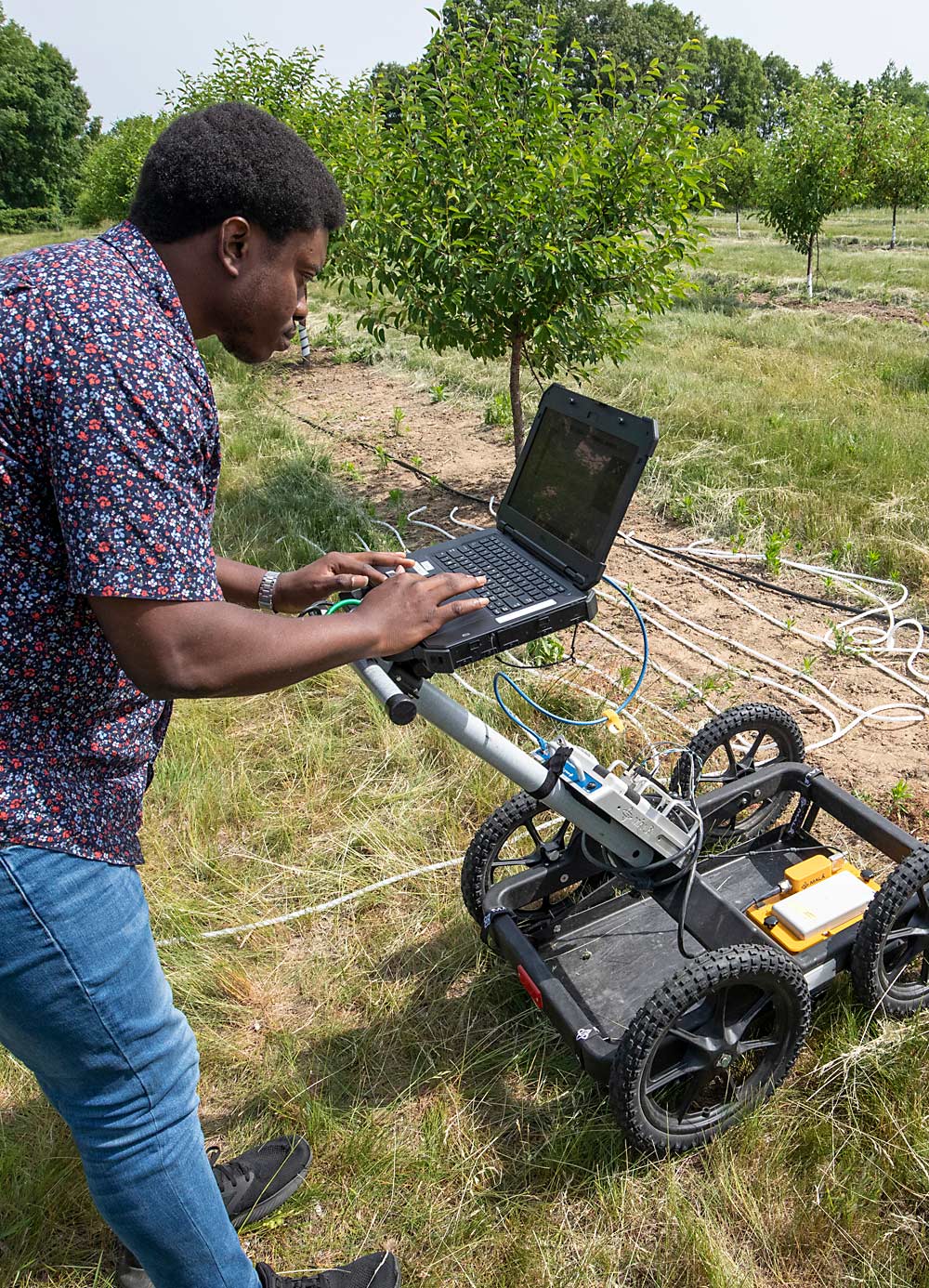
Basso said his team uses novel geophysical techniques such as GPR and ERT (electrical resistivity tomography) to better understand the spatial variability of cherry tree roots and canopies. Mapping roots will shed more light on the processes involved in their growth and how they relate to other physiological components of the tree, such as canopy size, trunk diameter and water usage, he said.
The work is just getting started in Michigan, but Basso believes the data gathered from these new tools can make orchard management more precise in the near future. He wants to pinpoint blocks or sections that constantly underperform, so growers know which parts of their orchards need more attention. He also wants to keep track of how much carbon is stored in the root biomass and soil over a few years, anticipating that fruit growers will eventually take part in carbon credit markets, he said. •
—by Matt Milkovich

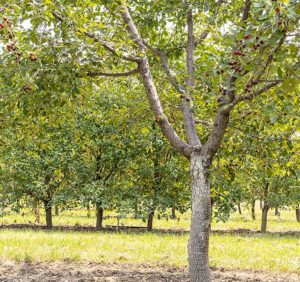
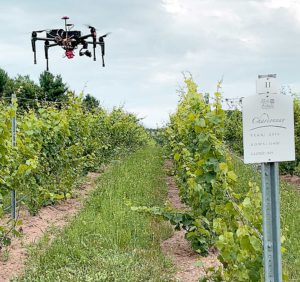





Weldone John Salako and other crews
This is amazing
I’m glad science and technology keeps aiding agricultural production to get better.
We look forward to more great outputs from you, John, Professors and other researchers at MSU!
What a wonderful work ,
You are all doing amazingly well
Well done John Salako